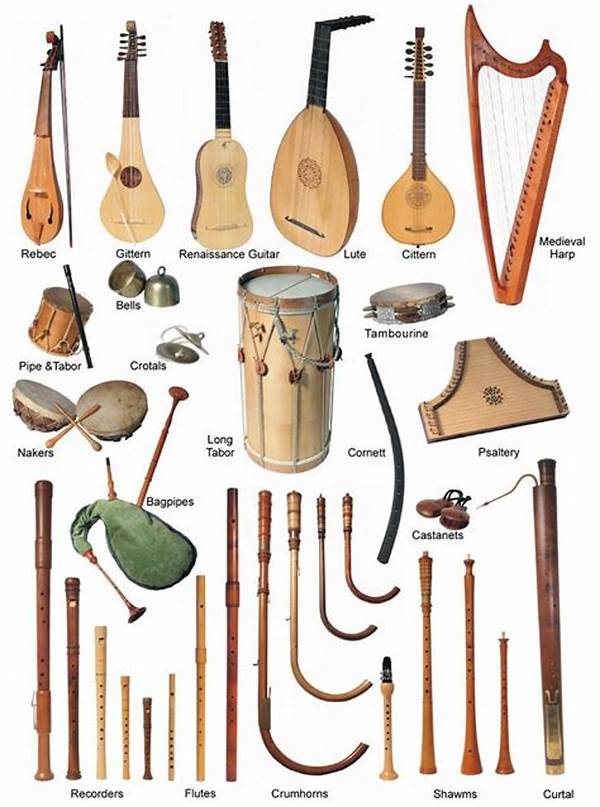The Timeless Magic of the Renaissance Era
Picture yourself wandering through the cobbled streets of Europe during the late 15th century. The air is filled with creativity, innovation, discovery, and an unmistakable melody marking the dawn of a new cultural chapter. This was a fascinating time, a period when art, science, architecture, and music underwent a revolutionary transformation. But, have you ever wondered which musical instrument truly encapsulated the spirit of this era? The Renaissance, a golden age of changes, not only reshaped the world but also redefined how music was perceived and played. Enter the lute — the soulful heart of Renaissance music, an instrument as essential to the era as Leonardo’s brushstrokes to the Sistine Chapel.
Read More : Best Instrument For Kids To Learn Music
Unique, beautiful, and deeply expressive, the lute stood as a beacon for composers and musicians searching for depth and texture in their music. Its sound was like a whisper of an era past, perfectly capturing the shift from medieval traditions to the modern sensibility. If the Renaissance had its voice, it would undoubtedly sing through the strings of this enchanting instrument.
Why the Lute Stands Out
The Importance of the Lute in the Renaissance
The lute’s prominence in the Renaissance cannot be overstated. This plucked string instrument, originally influenced by the Arabian oud, found its way into the courts and corners of Europe, becoming almost synonymous with Renaissance music. Every chord strummed on a lute had the magical ability to paint emotions — be it joy, melancholy, or introspection. It was the lute’s ability to express such a spectrum of sentiment that established it as an emblem of this illustrious era.
The influence of the lute was so widespread that it became an integral part of the musical curriculum, often featured in compositions by maestros like John Dowland and Francesco da Milano. It was played at royal courts and casual gatherings alike, significantly shaping the social and cultural life of the period.
The Design and Resonance of the Lute
The lute’s unique design contributed greatly to its signature sound. With a deep, rounded back resembling half a pear, a fretted neck, and gut strings that often numbered between six and twelve, the lute offered variability unseen in other contemporary instruments. This versatility allowed musicians to engage in an expansive array of expressive possibilities — from solo performances rich with intricate harmonies to accompanying poetic recitations and intimate vocal performances.
Interestingly, the lute was also a canvas of innovation. It witnessed transformations and adaptations over time, reflecting the evolving tastes in music and form. Each iteration enhanced its musical range and comprehension, making it an enduring symbol of musical exploration.
Hidden Stories from the Renaissance
The Lute’s Social and Cultural Impact
Learning to play the lute was seen as a mark of sophistication and culture during the Renaissance. It was not uncommon to see portraits of the elite cradling a lute as a sign of their refined taste and intellect. The instrument was also a medium of romance, often employed to serenade lovers or express deepest yearnings through song.
The lute’s widespread appeal made it not just a musical instrument but an important cultural artifact that invites curiosity and appreciation decades later. Its soft yet distinct tone served as the soundtrack to gatherings, impacting how music was shared, experienced, and valued amid the Renaissance spirit of innovation and artistic pursuit.
Read More : Review Of A Digital Upright Piano With The Latest Technology
The Lute in Modern Times
Today, the lute may not be as mainstream as it once was, but it remains cherished by enthusiasts and scholars. Modern musicians still explore its rich tonal possibilities, ensuring its legacy continues. Preservation efforts work tirelessly to ensure that this Renaissance gem retains its revered position in musical history.
Detailed Exploration of the Lute’s Influence
The Enigmatic Journey of the Lute
Bridging Time with Strings
In conclusion, the lute wasn’t just another musical instrument but a phenomenon that left a lasting mark on the Renaissance, symbolizing the era’s innovative, exploratory spirit. Its haunting yet beautiful music inspired countless artists and musicians, continuing to do so in the modern era.
Continual Fascination
Today’s fascination with the lute is rooted in its ability to evoke the emotional clarity of the Renaissance. Musicians and audiences alike are drawn to its sound, yearning to connect with a time that redefined human expression and creativity.
Testament of Time
While music trends have evolved, the essence captured by the lute endures as a testament to its significance. The Renaissance era revolved around transformation and beauty — ideals embodied wholly within the lute’s melodies.
Renaissance Epitome
Ultimately, if asked to name a musical instrument that defined the Renaissance era, the lute easily claims this title. Its profound influence is echoed not only within concert halls but also in the very essence of music history, standing proud as a pillar of Renaissance legacy.
